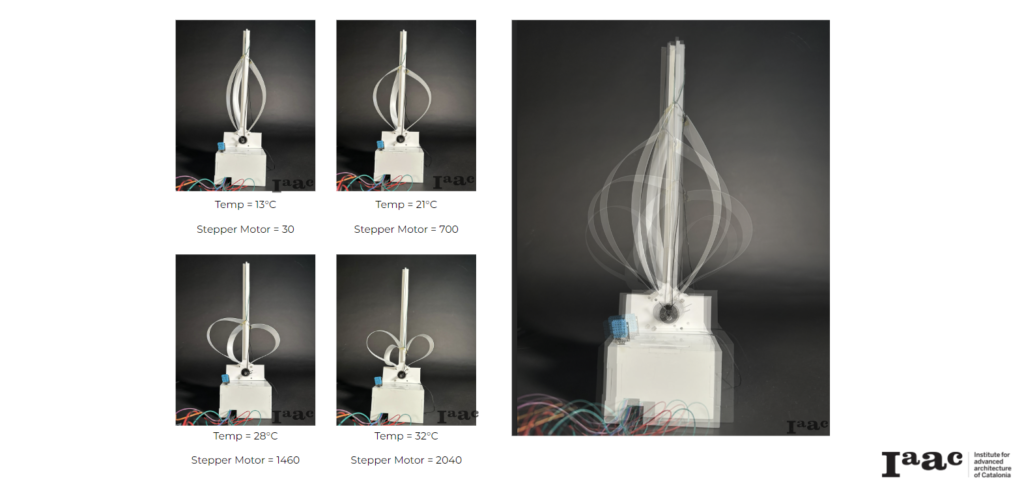Vertical structure responsive to temperature changes
CONCEPT
The project proposes a vertical system that responds to temperature differences to visualize these changes interactively. Its main objective is to create diverse interactions with users through the response to temperature changes. The foundation of the system relies on the use of flexible membranes that expand and compress, allowing continuous adaptation to environmental factors.
The technology implemented in this project utilizes temperature sensors to detect variations in the surroundings. These sensors activate the mechanism of expansion and compression of the flexible membranes, creating a visual effect that mirrors thermal fluctuations. This dynamic and visible response to temperature changes aims not only to inform about environmental conditions but also to engage users interactively.
The system’s adaptability makes it a versatile tool for diverse environments. The flexible membranes enable controlled and subtle manipulation, providing the possibility to adjust in real-time to temperature variations. This feature makes it suitable for implementation in both indoor and outdoor spaces, offering clear and appealing visual information about environmental changes.
Besides its primary function of visualizing thermal changes, the system aims to actively involve users. It seeks to create interactive experiences by allowing people to interact with the flexible membranes, exploring how their manipulation influences the system’s visual response. This not only promotes awareness of temperature variations but also provides a unique and educational sensory experience.
The system’s design focuses on harmonious integration with the surrounding environment. The flexible membranes, besides their thermal functionality, can be aesthetically incorporated into different contexts, adding an artistic and aesthetic component to the space where it is implemented.
In summary, this project is based on an interactive vertical system that responds to temperature changes using flexible membranes. Its continuous adaptability and interactive approach aim not only to inform about environmental conditions but also to engage users, offering a unique visual and sensory experience in diverse environments.

PROCESS
01.- Temperature measurements are taken using a DHT11 sensor, dividing the temperature into 4 ranges. To visualize temperature changes, 4 LEDs are programmed, one for each range.
02.- An ultrasonic distance sensor is proposed to activate the movement system within a minimum distance range (50cm).
03.- A Micro Servo or a stepper motor will be used for movement, which will act according to the temperature changes based on the previously established ranges.

PARAMETERS
TEMPERATURE
Define the range of temperatures that will trigger the system’s response. Determine the lower and upper thresholds for temperature variations that will cause membrane expansion or compression.
DISTANCE
Define how accurate the system is in detecting distance. This might refer to sensitivity in identifying subtle changes in distance or precision in measurement.
MOVEMENT
Define the rate or speed at which the material (such as flexible membranes) moves or changes its position in response to temperature or distance variations.
MATERIAL FLEXIBILITY
Consider the properties of the materials used for the membranes. Parameters here could include elasticity, tensile strength, durability, and adaptability to varying temperature conditions.
PROTOTYPE 01
BILL OF MATERIALS
SERVO_DHT11 _ULTRASONIC_LED
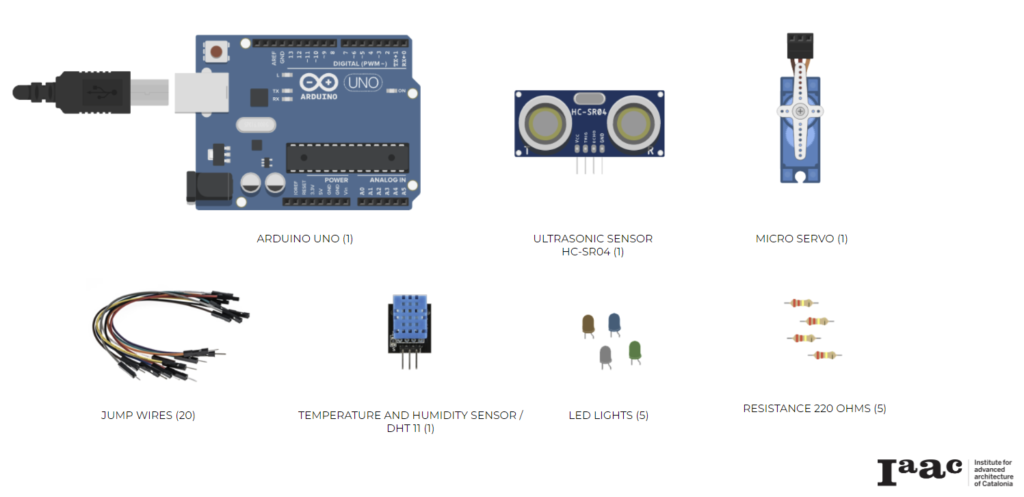
SCHEMATICS
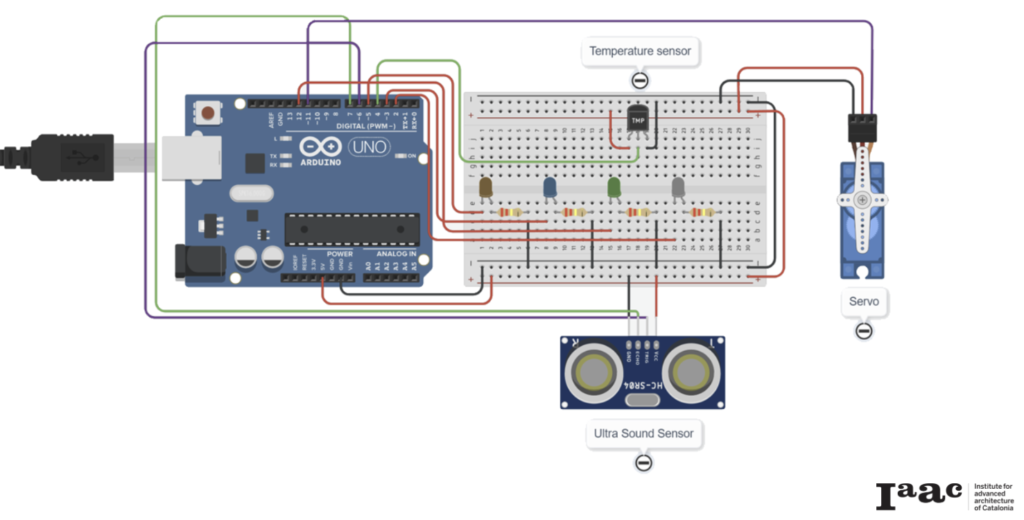



PROTOTYPE 02
BILL OF MATERIALS
STEPPER MOTOR_LIMIT SWITCH_DHT11

SCHEMATICS
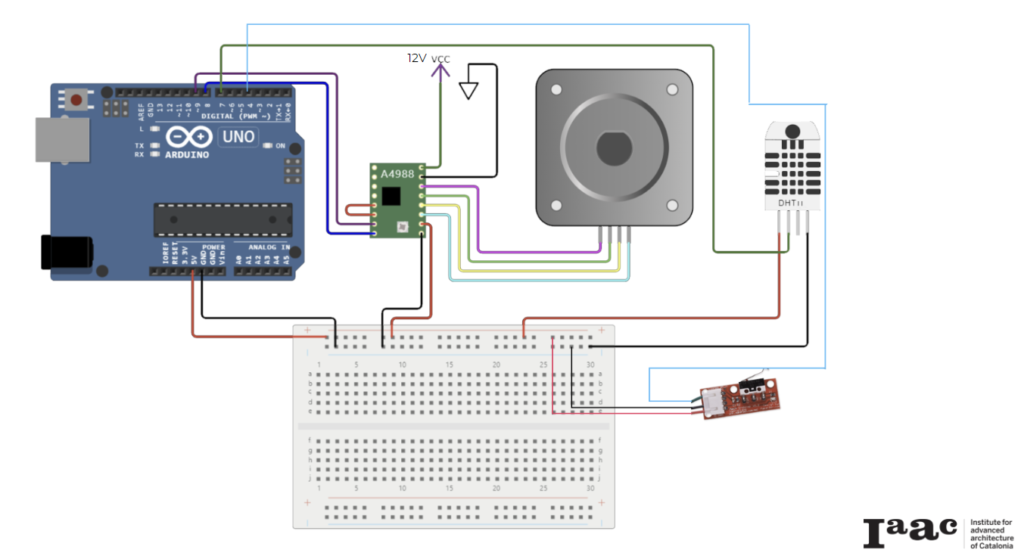
SCRIPT
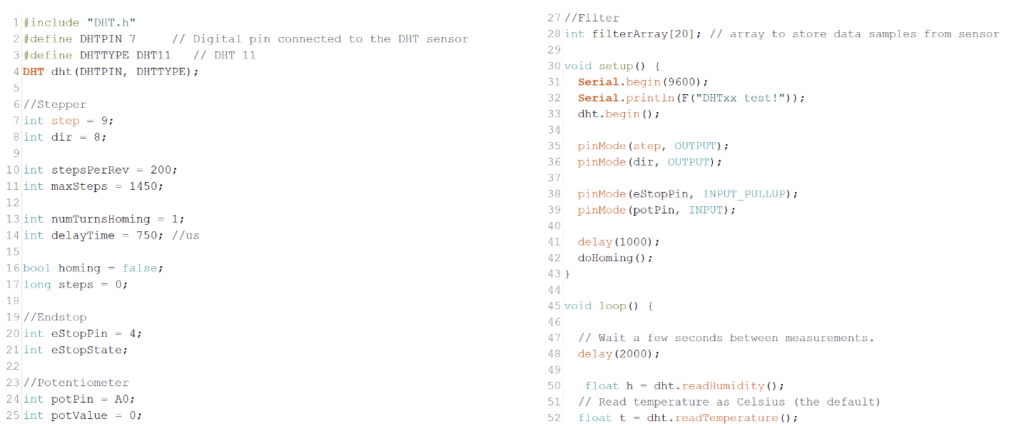



PHYSICAL MODEL

